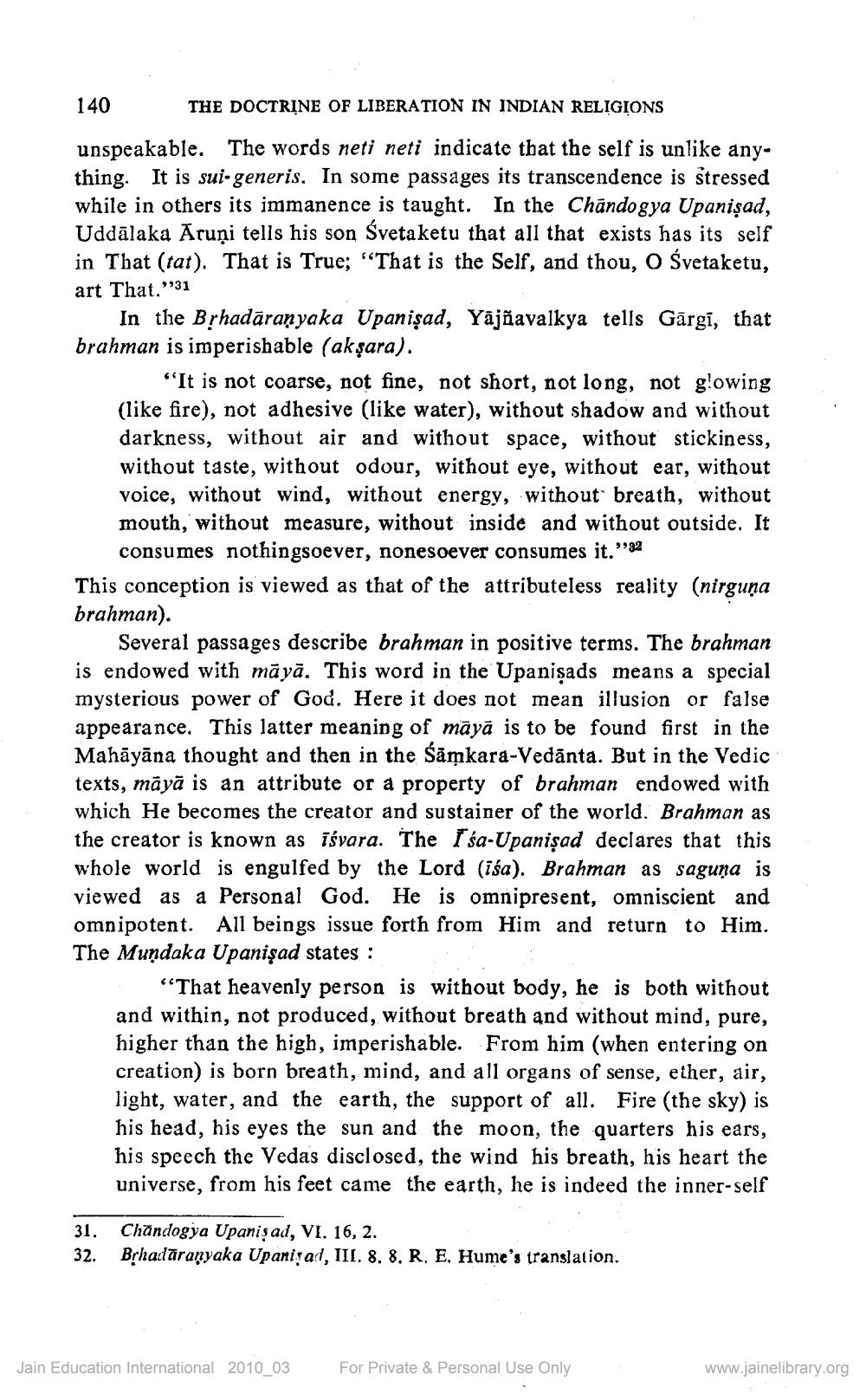________________
140
THE DOCTRINE OF LIBERATION IN INDIAN RELIGIONS
unspeakable. The words neti neti indicate that the self is unlike anything. It is sui-generis. In some passages its transcendence is stressed while in others its immanence is taught. In the Chandogya Upanişad, Uddālaka Aruņi tells his son Svetaketu that all that exists has its self in That (tat). That is True; "That is the Self, and thou, O Śvetaketu, art That."'31
In the Brhadāraṇyaka Upanişad, Yājõavalkya tells Gārgi, that brahman is imperishable (ak şara).
"It is not coarse, not fine, not short, not long, not glowing (like fire), not adhesive (like water), without shadow and without darkness, without air and without space, without stickiness, without taste, without odour, without eye, without ear, without voice, without wind, without energy, without breath, without mouth, without measure, without inside and without outside. It
consumes nothingsoever, nonesoever consumes it."92 This conception is viewed as that of the attributeless reality (nirguņa brahman).
Several passages describe brahman in positive terms. The brahman is endowed with māyā. This word in the Upanişads means a special mysterious power of God. Here it does not mean illusion or false appearance. This latter meaning of māyā is to be found first in the Mahāyāna thought and then in the Sāmkara-Vedānta. But in the Vedic texts, māyā is an attribute or a property of brahman endowed with which He becomes the creator and sustainer of the world. Brahman as the creator is known as īśvara. The i śa-Upanişad declares that this whole world is engulfed by the Lord (iśa). Brahman as saguna is viewed as a Personal God. He is omnipresent, omniscient and omnipotent. All beings issue forth from Him and return to Him. The Mundaka Upanişad states : :
"That heavenly person is without body, he is both without and within, not produced, without breath and without mind, pure, higher than the high, imperishable. From him (when entering on creation) is born breath, mind, and all organs of sense, ether, air, light, water, and the earth, the support of all. Fire (the sky) is his head, his eyes the sun and the moon, the quarters his ears, his speech the Vedas disclosed, the wind his breath, his heart the universe, from his feet came the earth, he is indeed the inner-self
31. 32.
Chandogya Upanişad, VI. 16, 2. Brhadaranyaka Upanişad, III. 8. 8. R. E. Hume's translation.
Jain Education International 2010_03
For Private & Personal Use Only
www.jainelibrary.org




